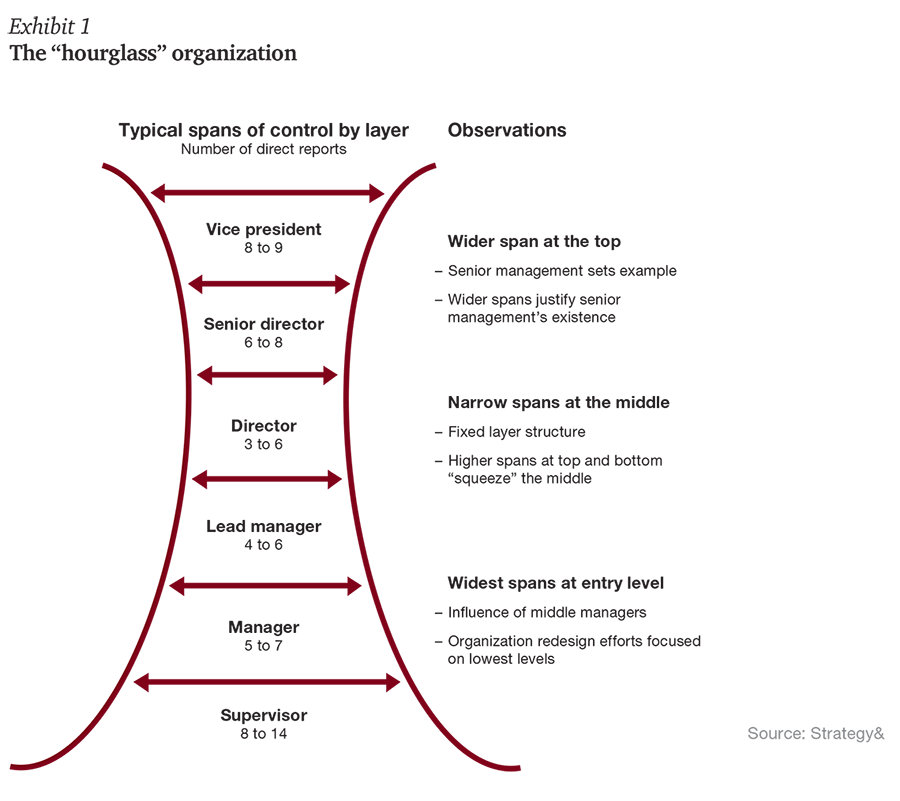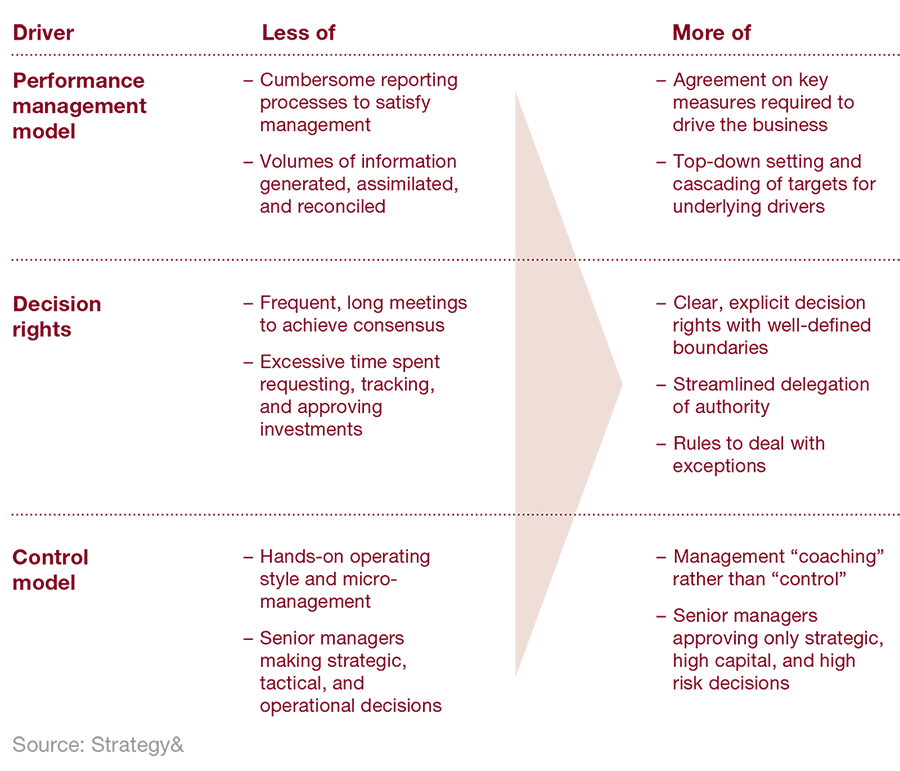Management spans and layers: Streamlining the out-of-shape organization
Do you recognize the hourglass organization (see Exhibit 1)? If you look closely at the management ranks of many Fortune 500 corporations, you’ll see this unfortunate phenomenon: excessive layers and narrow spans of control, particularly among mid-level directors and managers. The result is often bureaucratic buildup, bottle-necked decision-making, and a general lack of innovation. Employees laboring at the customer-facing end of this attenuated organization structure are hamstrung by vertical decision-making and multi-matrixed reporting relationships. Their career prospects are unenticing and their creativity diminished. The view at the top is equally uninspiring … and crowded. Organizations like these need to look beyond simple headcount reductions to find more lasting and effective methods for getting in shape.

Case study: Spans and layers
As the lead initiative in an overall global effectiveness program, a Fortune 100 client of Strategy& launched a “spans and layers” program designed to reduce high G&A costs driven by organizational complexity. Recognizing that the existing multi-matrix structure was costly, sluggish, uncoordinated, and inwardly focused, management was convinced that a flatter and more streamlined organization model was critical to effecting its strategy and competing in a global marketplace. The team charged with leading this effort followed a four-step process over a period of 12 weeks, first baselining the existing spans and layers, then sizing the prize from a top-down perspective, then designing and implementing solutions to reduce layers and optimize the organization model. In the end, the company realized approximately $200 million in savings, which constituted 25% of the total cost savings generated by the entire global effectiveness program.

Contact us



© 2019 - 2026 PwC. All rights reserved. PwC refers to the PwC network and/or one or more of its member firms, each of which is a separate legal entity. Please see www.pwc.com/structure for further details.